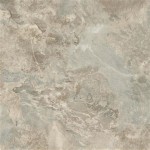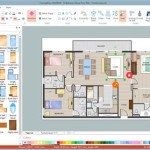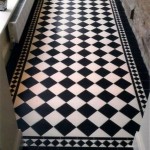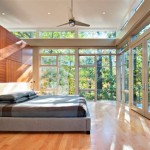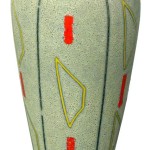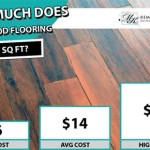Mid-Century Modern Tile Floor: A Timeless Design Element
Mid-Century Modern (MCM) design, a movement that flourished roughly from the mid-1940s to the mid-1960s, continues to influence contemporary aesthetics. Characterized by clean lines, organic shapes, and a focus on functionality, MCM extends beyond furniture and architecture to include flooring choices. Tile, in particular, played a significant role in defining the look and feel of MCM interiors, offering durability, style, and versatility. Understanding the nuances of MCM tile flooring involves examining its characteristic patterns, materials, color palettes, and the enduring appeal it holds for homeowners and designers today.
Tile flooring in the Mid-Century Modern era wasn't simply a practical choice; it was a deliberate design statement that complemented the overall architectural and interior design principles of the time. Architects and designers carefully considered tile's contribution to the open floor plans and connection to the outdoors that were hallmarks of MCM homes. Different types of tile served different purposes, from creating visually striking entryways to providing durable and easily maintainable surfaces in kitchens and bathrooms.
Key Characteristics of Mid-Century Modern Tile Flooring
Several defining characteristics distinguish Mid-Century Modern tile flooring from other styles. These elements contribute to the overall aesthetic that defines the era, ensuring a cohesive and visually appealing interior space.
Geometric Patterns and Shapes: One of the most recognizable aspects of MCM tile flooring is the prevalence of geometric patterns and shapes. These patterns often featured simple, repeating motifs such as squares, rectangles, triangles, and hexagons. These shapes can be arranged in various configurations to create visually interesting and dynamic floors. For example, a checkerboard pattern using contrasting colors was a popular choice for kitchens and entryways. Beyond basic shapes, designers also incorporated more complex, abstract geometric designs, often referencing atomic structures or stylized natural forms. The use of tessellations, where shapes interlock seamlessly, was another common technique to create visually complex and engaging patterns.
The size of the tiles used also played a role in the overall pattern. Smaller tiles allowed for more intricate and detailed designs, while larger tiles created a cleaner, more minimalist look. The combination of different tile sizes within a single pattern was also employed to add visual interest and depth. The arrangement and orientation of the tiles, such as running bond or herringbone patterns, also contributed to the overall geometric effect.
Color Palettes: The color palettes used in Mid-Century Modern tile flooring were generally bold and optimistic, reflecting the post-war optimism of the era. While natural materials like wood and stone were also popular, tile offered a way to introduce vibrant color without compromising durability. Popular colors included avocado green, mustard yellow, turquoise, coral, and various shades of blue and gray. These colors were often used in combination, creating striking contrasts and visual interest. For example, a kitchen floor might feature a checkerboard pattern of avocado green and white tiles, while a bathroom might showcase a mosaic of turquoise, blue, and gray tiles.
However, the use of neutral colors was also prevalent, particularly in larger areas or to balance bolder accents. Off-white, beige, and light gray tiles provided a neutral backdrop that allowed other design elements, such as furniture and artwork, to take center stage. These neutral tones were often paired with bolder accent colors to create a balanced and visually appealing space. The specific color choices often depended on the room's function and the overall design scheme of the house. Brighter, more vibrant colors were commonly used in kitchens and bathrooms, while more subdued and neutral tones were preferred in living rooms and bedrooms.
Material and Texture: While ceramic and vinyl tiles were the most common materials used in Mid-Century Modern tile flooring, other options like terrazzo and slate were also utilized. Ceramic tiles offered a durable and affordable option that was available in a wide range of colors and patterns. Vinyl tiles, particularly linoleum, provided a softer and more resilient surface, making them suitable for high-traffic areas. Terrazzo, a composite material made of marble chips set in concrete, offered a unique and luxurious look, while slate tiles provided a natural and textured surface.
The texture of the tile was also an important consideration. While smooth, glossy tiles were popular for their easy maintenance and clean look, textured tiles were also used to add visual interest and depth. Embossed tiles with geometric patterns or subtle surface variations were common, adding a tactile element to the floor. The choice of texture often depended on the room's function and the desired aesthetic. Smooth tiles were typically used in kitchens and bathrooms for their ease of cleaning, while textured tiles were more common in living rooms and entryways for their visual appeal.
The Role of Tile in Different Rooms
Mid-Century Modern tile flooring was not limited to a single room; it was used throughout the house, each space featuring a unique interpretation of the design principles. The specific choices of pattern, color, and material were tailored to the function and style of each room.
Kitchens: Kitchens were often a showcase for bold and vibrant tile flooring. Checkerboard patterns in contrasting colors like black and white, red and white, or avocado green and white were common. Geometric patterns with smaller tiles were also popular, creating visually interesting and dynamic floors. Durable and easy-to-clean ceramic or vinyl tiles were the preferred materials. The focus was on creating a functional and visually appealing space that complemented the clean lines and modern appliances of the era. Backsplashes also frequently incorporated tile, often using the same patterns and colors as the floor, creating a cohesive design scheme.
Bathrooms: Bathrooms offered another opportunity to experiment with color and pattern. Mosaic tiles in various shades of blue, green, and turquoise were common, creating a refreshing and spa-like atmosphere. Geometric patterns were also popular, often incorporating smaller tiles to create intricate designs. Ceramic and porcelain tiles were the preferred materials due to their water resistance and durability. The use of colored grout was also a common technique to enhance the pattern and add visual interest. The overall goal was to create a clean, bright, and functional space that reflected the modern aesthetic.
Entryways and Living Rooms: Entryways and living rooms often featured more subdued and sophisticated tile flooring. Neutral colors like beige, gray, and off-white were common, providing a neutral backdrop that allowed other design elements to stand out. Terrazzo tiles were also a popular choice for their luxurious and unique look. Larger tiles were typically used to create a clean and minimalist look. The focus was on creating a welcoming and stylish space that complemented the overall design of the house. Area rugs were often used to add warmth and texture to the space, softening the hard surface of the tile.
Reviving and Maintaining Mid-Century Modern Tile Floors
For homeowners with original Mid-Century Modern tile floors, preserving and maintaining them is crucial to retaining their authenticity and value. For those seeking to recreate the MCM aesthetic in their homes, understanding the nuances of the original designs is essential for achieving a historically accurate and visually appealing result.
Preservation and Restoration: Original Mid-Century Modern tile floors often require careful cleaning and restoration to remove years of dirt and grime. Gentle cleaning solutions and soft brushes should be used to avoid damaging the tile surface. For more stubborn stains, professional tile cleaning services may be required. Replacing damaged or missing tiles can be challenging, as finding exact matches can be difficult. However, salvage yards and online resources may offer options for sourcing vintage tiles. When replacing tiles, it is important to use matching grout to maintain the original aesthetic. Sealing the tile and grout can also help to protect it from future damage and staining.
Recreating the Look: For homeowners seeking to recreate the Mid-Century Modern tile floor aesthetic, a wide range of modern tiles are available that mimic the look and feel of the original designs. Ceramic and porcelain tiles are available in a variety of geometric patterns and colors that are reminiscent of the era. Vinyl tiles also offer a durable and affordable option for creating MCM-inspired floors. When choosing tiles, it is important to consider the overall design scheme of the house and select colors and patterns that complement the existing decor. The size and shape of the tiles should also be carefully considered to achieve the desired look. Using colored grout can also help to enhance the pattern and add visual interest.
Ultimately, the enduring appeal of Mid-Century Modern tile flooring lies in its ability to combine functionality, style, and a sense of timelessness. Whether preserving an original floor or recreating the look, understanding the key characteristics of MCM tile flooring is essential for creating a visually appealing and historically accurate interior space. The clean lines, geometric patterns, and bold color palettes of the era continue to resonate with homeowners and designers today, making Mid-Century Modern tile flooring a enduring design element.

10 Stunning Mid Century Modern Tile Ideas

New Aesthetic Unlocked 10 Ideas For Mid Century Tile Country Floors

New Aesthetic Unlocked 10 Ideas For Mid Century Tile Country Floors

Tile 101 How To Choose The Right For Your Midcentury Home Atomic Ranch

Best Mid Century Modern Flooring Options To Fit Your Style

Best Mid Century Modern Tiles Arizona Tile

Midcentury Masterpiece 1955 Time Capsule Tile House In Minneapolis Every Room Full Of Exquisite Designs 69 Photos Retro Renovation

10 Stunning Mid Century Modern Tiles

Mid Century Modern Bathroom Tile Atomic Ranch

16 Mid Century Modern Foyer Ideas
